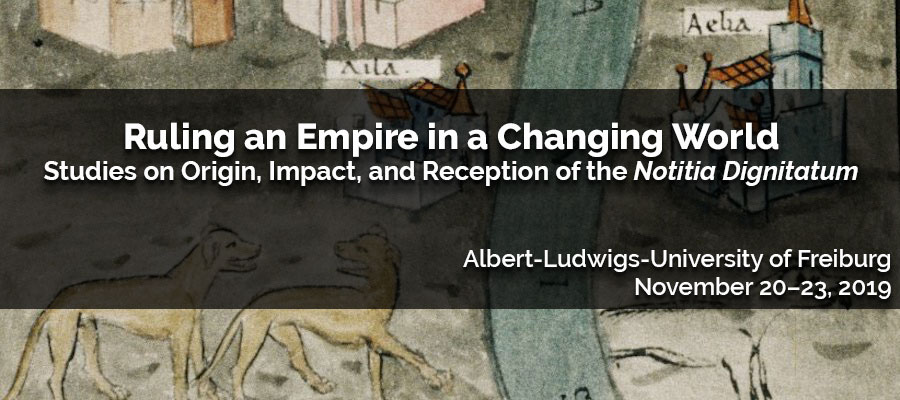Ruling an Empire in a Changing World – Studies on Origin, Impact, and Reception of the Notitia Dignitatum, Albert-Ludwigs-University of Freiburg, November 20–23, 2019
In the late 4th and the first half of the 5th century, administrative lists were compiled, which have become known under the name of Notitia Dignitatum. This collection of lists offers us nowadays a unique insight in the administrative and military structures of the Roman Empire, in both its Western and its Eastern part. The number and quality of the illustrations in particular, as the whole composition and character of the document, point towards the assumption that the original version was no traditional administration manual. In research, the analysis of the transmission history has been of the same fundamental importance as the use of the Notitia Dignitatum as a historical source. The extant manuscripts are all tracked back to a Carolingian parchment codex from the library of the diocesan chapter of Speyer; a codex that was last mentioned in 1566 and is assumedly lost. Since more than 100 years, the mysteries of the lacunary transmission history and the variations in the manuscripts from the Late Medieval/Early Modern times have been fundamental for every scientific approach to this document. Due to these factors, the Notitia Dignitatum has remained until today an important, but at the same time very controversial part of numerous historical and archaeological studies.
One of the aims of this international conference is to reflect, for the first time since the 1974 Oxford colloquium organised by R. Goodburn and Ph. Bartholomew, upon the considerable increase in knowledge about the Notitia Dignitatum which has occurred over the last decades. This has largely been due to new possibilities, for example offered by the digitalisation of the extant manuscripts. Furthermore, there remain older theories to be discussed at the conference, and space for new approaches shall be created equally. Until a few years ago, practically everyone conducting research on the Notitia Dignitatum was working with those manuscripts or older editions which were the most easily accessible. By now, however, digitalisation of all known manuscripts and fragments allows easy and unrestricted access so crucial for detailed studies based on source criticism. The Notitia Dignitatum demands, as hardly another antique source does, interdisciplinary approaches and collaboration between different historical and archaeological disciplines in order to address properly all the various aspects of this multi-faceted document. Consequently, colleagues from all the disciplines in question, Ancient History, Epigraphy, Papyrology, Provincial Roman Archaeology, Classical Archaeology, Art History, Medieval Studies, Palaeography, and related fields are invited to submit abstracts.
